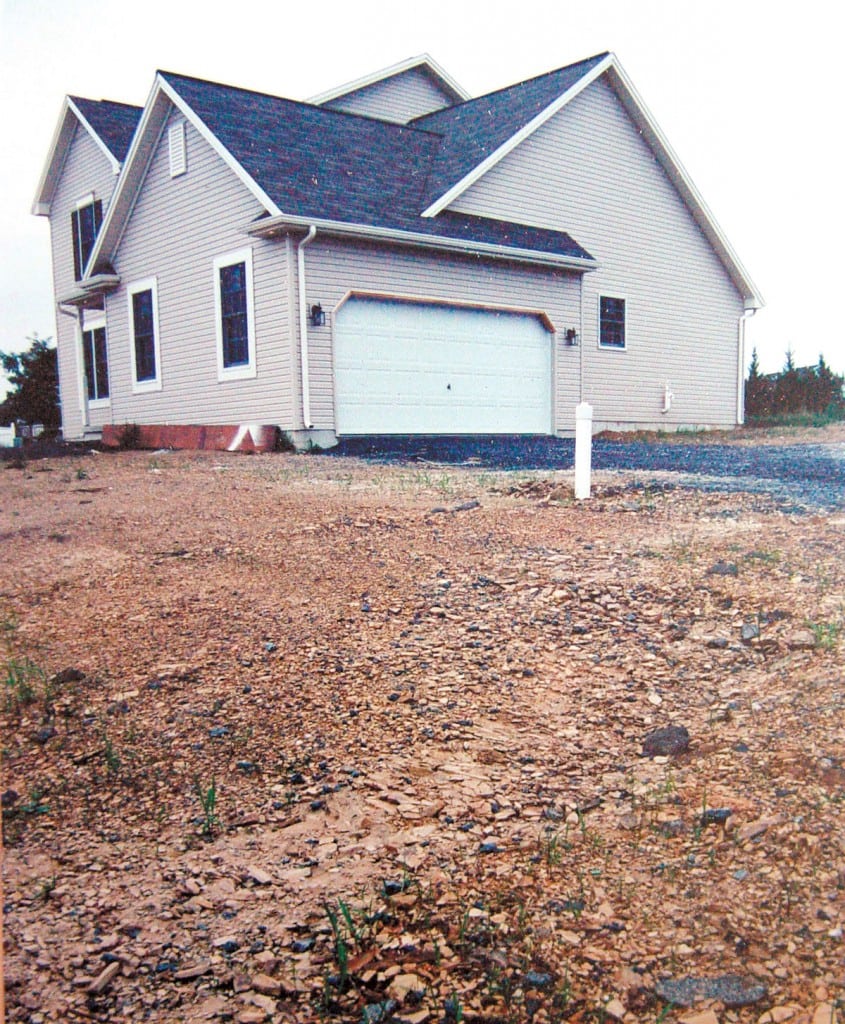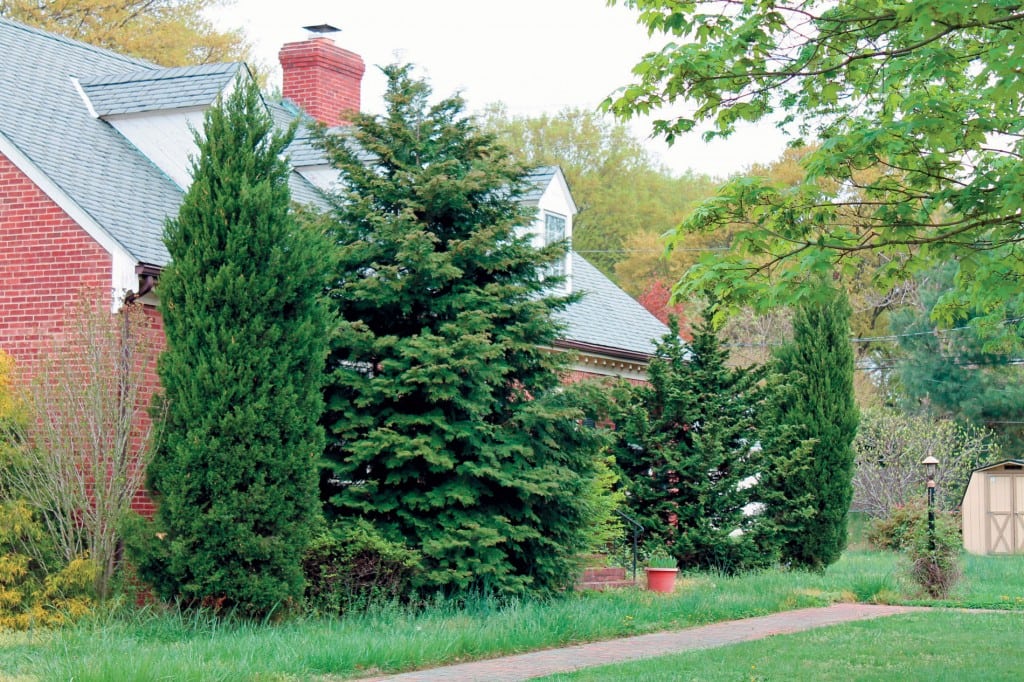Good gardeners aren’t born with “green thumbs” that give them mystical powers to make any plant thrive. Gardening is like any endeavor: The more you know, the more success you’re likely to have.
Every setback can serve as a learning experience and evidence for the saying that, “Everything I learned about gardening can be found in my compost pile.”
One way to speed up the process is by taking advantage of the knowledge of those who have killed their petunias and dogwood trees before you.
Here are seven of the most important woes that our “foregardeners” would warn you about:

Not improving lousy soil
Tennessee has a wide variety of soil types because it stretches across such a wide area.
“The main problem in Tennessee is heavy clay, which can prevent nutrients from being absorbed by plants,” says George Kilgore, a well known gardening expert. “Applying at least 2 inches of organic matter annually will help in breaking up clay particles.”
You can accomplish this in a couple of ways. One school of thought advises rototilling or deeply digging the ground to at least 10 or 12 inches deep, then working about 2 inches of compost, rotted leaves or similar organic matter into it.
A second school of thought advises topping the landscape-bed-to-be with about 12 inches of wood chips and then waiting at least six weeks for decomposition to start. Then the chips can be pulled back to plant and moved among the plants as mulch.
You only need to do one of these and just one time: before planting. From then on, just keep a 2- to 3-inch layer of organic matter over the surface, and let the earthworms and microbes be your “soil-improvers.”
Planting too closely
This common blunder includes planting plants too close to one another as well as too close to the house.
Crowding sets you up for a jungle look within a few years, sets the stage for unnecessary pruning and makes plants more prone to disease since crowded foliage doesn’t dry as well.
Determine the mature width of your new plants, and space them according to that — not their current size. A good rule of thumb: Add mature widths together and divide by two, then plant no closer than that. (Example: 8-foot holly beside a 4-foot spirea: 8+4=12, divided by 2 equals a 6-foot minimum spacing.)
To space from houses, simply divide the mature width in half and plant no closer than that. (Example: An 8-foot holly should be placed no closer than 4 feet from the house.)
Too-deep planting
This one’s a major killer of trees. Planting deeply doesn’t make a tree less likely to blow over. It’s likely to suffocate the roots and rot the buried bark.
Before planting a new tree, identify its “root flare” — the area at the base of the trunk where it begins to slightly widen. Plant so that this flare is just above grade.
Be aware that potted and balled-and-burlapped trees are often already planted too deeply in their pots and bags. You may need to excavate soil to expose the flare.
You will also want to plant trees that flourish in Tennessee.
“Trees that are native to the area are always good choices,” Kilgore says. “ For Tennessee, these include maples, pines, oaks and dogwoods.
“Plant trees in the fall because they will have time to acclimate to the soil conditions before spring. Applying fertilizer when the tree is planted is not necessary.”
Poor planting practices
Go wide but not overly deep with those holes when planting trees and shrubs.
Most roots spread out within the top 1 to 2 feet of the surface as opposed to going straight down deeply.
Dig holes for your trees and shrubs three to five times as wide as the root ball but only as deep as the root ball (so the soil doesn’t settle underneath and cause the root ball to sink).
Fray out circling roots, and don’t plant too deep. Tamp the soil, and water well after planting.
Kilgore offers a few additional suggestions:
- Look up to make sure you are not in the way of power lines.
- Make sure you don’t plant too close to the house foundation.
- Select the proper tree for the planting area. Not all trees need full sun.
Mulching miscues
You can overdo it or underdo it with mulch, which is the coarse wood or organic matter used on soil surfaces to discourage weeds and retain soil moisture.
Too much mulch can cause the same problems as planting too deeply. Too little won’t stop weeds or retain moisture very well.
Be especially careful not to pack mulch up against the stems and trunks of plants. This can rot the stems and bark and possibly kill the plants.
Two to 3 inches of organic mulch (i.e. bark mulch, chopped leaves, pine straw, shredded hardwood) is ideal around trees and shrubs. One to 2 inches is fine around flowers.
“Any organic material that has had time to heat up and cool down works,” Kilgore says. “Shredded hardwood mulch is the most commonly used type in Tennessee.”
Watering blunders
Your goal is to keep the soil consistently damp (never soggy) all around the root ball and to just below it. That encourages roots to grow out toward the water without rotting them.
The best way to gauge the amount: Water slowly enough that the water soaks in instead of runs off for the time you think is right. Wait 10 or 15 minutes and use a stick or probe to go down beside the root ball to see how deeply the soil has been moistened. If it’s excessively wet, cut back next time. If it’s not wet deeply enough, you’ll need to water longer.
Once you know the time and amount that’s just right for that bed, deliver it according to weather and plant size.
Plants such as trees and shrubs with bigger root balls are best soaked deeply once or twice a week. Vegetables, annual flowers and newly planted perennials are best watered two to three times a week in hot, dry weather since their roots are shallower and closer to the surface (which dries out fastest).
You won’t need to water as much when it’s cooler and cloudier and probably not at all if a soaking rain does the deed for you.
Pay more careful attention to regularly watering young plants whose roots are limited and more at risk from dry soil.
Occasionally, you will encounter a summer like our last one in Tennessee.
“The only thing you can do is to make sure you don’t plant in low-lying areas where water can easily accumulate,” Kilgore says. “Drowning is the most common cause of death when it comes to many plants. You can add water, but you will have a hard time removing water.”
Picking problem-prone plants
Plants have their own particular site preferences (especially when it comes to light and soil moisture), and some are pickier about them than others.
Some do a good job of adapting to a variety of sites while others need close-to-ideal conditions or else they’ll struggle and possibly die.
A big part of good gardening involves figuring out where each plant will be “happiest.” Just as important is knowing which are the most trouble-prone plants — a lineup that varies from area to area.
“You can plant anything, but some things do not grow as well in certain areas,” Kilgore advises.
“That’s why I tell people to utilize and understand the zoning map and read the labels on plants before they purchase or order in catalogs or online.
“In gardens, heat-loving flowers and vegetables such as cucumbers, tomatoes, sunflowers and zinnias do great in Tennessee. The main problem I see in home gardens is planting in the wrong location and crowding so that the plants cannot grow to their full potential.”
To learn more, check with trusted local experts (Extension educators and local garden centers are good starting points) as well as experienced local gardeners and published lists targeted as closely as possible to your area.
As for plants you realize are struggling because you’ve guessed wrong on the site, don’t be afraid to move them — the sooner the better.
Most “green-thumb” gardeners will tell you they moved every plant in their yards a minimum of three times before getting it right.



